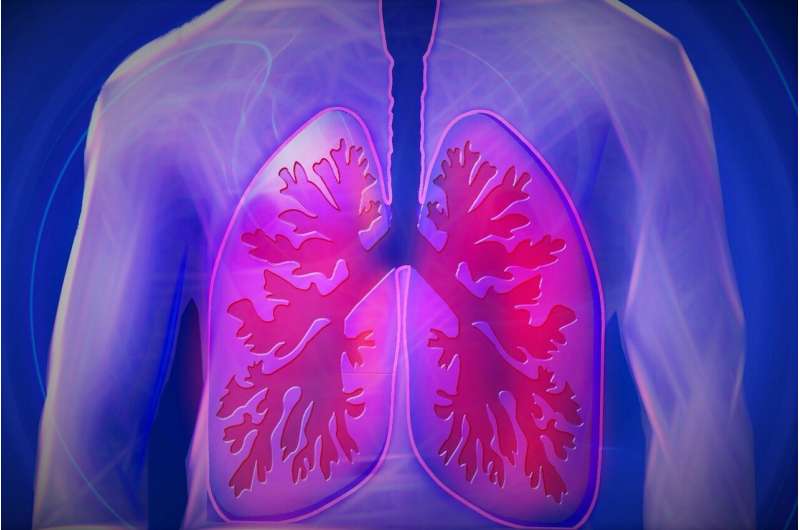Potential biomarker found for lung disease in scleroderma patients

Researchers have discovered a protein that may predict disease severity for a lung condition that often proves fatal to patients with scleroderma.
The recent study, published in Arthritis Care & Research and investigated by a Michigan Medicine researcher, found a novel adipokine, known as CTRP9, is associated with pulmonary function for scleroderma patients with interstitial lung disease. The pulmonary condition can cause scarring in the lungs, making it harder for optimal gas exchange.
"Despite interstitial lung disease being the leading cause of death among scleroderma patients, there are very few markers that predict progression of the disease," said John Varga, M.D., a corresponding author of the paper, chief of the Michigan Medicine Division of Rheumatology and associate director of the U-M Scleroderma Program. "CTRP9 is an entirely novel biomarker that has never been implicated in scleroderma. It will help physicians predict the course of the disease and identify those patients who would not need to be on aggressive treatment for their lung disease."
For the retrospective study, researchers analyzed data from 110 patients with interstitial lung disease and scleroderma, the latter affecting more than 50,000 people in the United States. They measured CTRP9 serum levels and collected clinical and lung function data that was taken every 12 months over a four-year period.
Patients with higher circulating levels of CTRP9 developed more severe lung disease, and low levels of the protein were associated with preserved function. Researchers also found an association between CTRP9 levels and monocytes, immune cells known to contribute to lung fibrosis.
While CTRP9 did not predict disease progression, researchers note a possible reason why: Interstitial lung disease often progresses steeply soon after the diagnosis, and because the baseline disease duration of the subjects was nine years, patients may have reached their disease plateaus.
"The results from the new study add to the collection of biomarkers that could help for classification and treatment prediction for people living with scleroderma-associated lung disease," Varga said. "We look forward to future studies that validate and expand upon this work."
More information: Monica M. Yang et al, Circulating CTRP9 is Associated with Severity of Systemic Sclerosis‐associated Interstitial Lung Disease, Arthritis Care & Research (2021). DOI: 10.1002/acr.24749



















